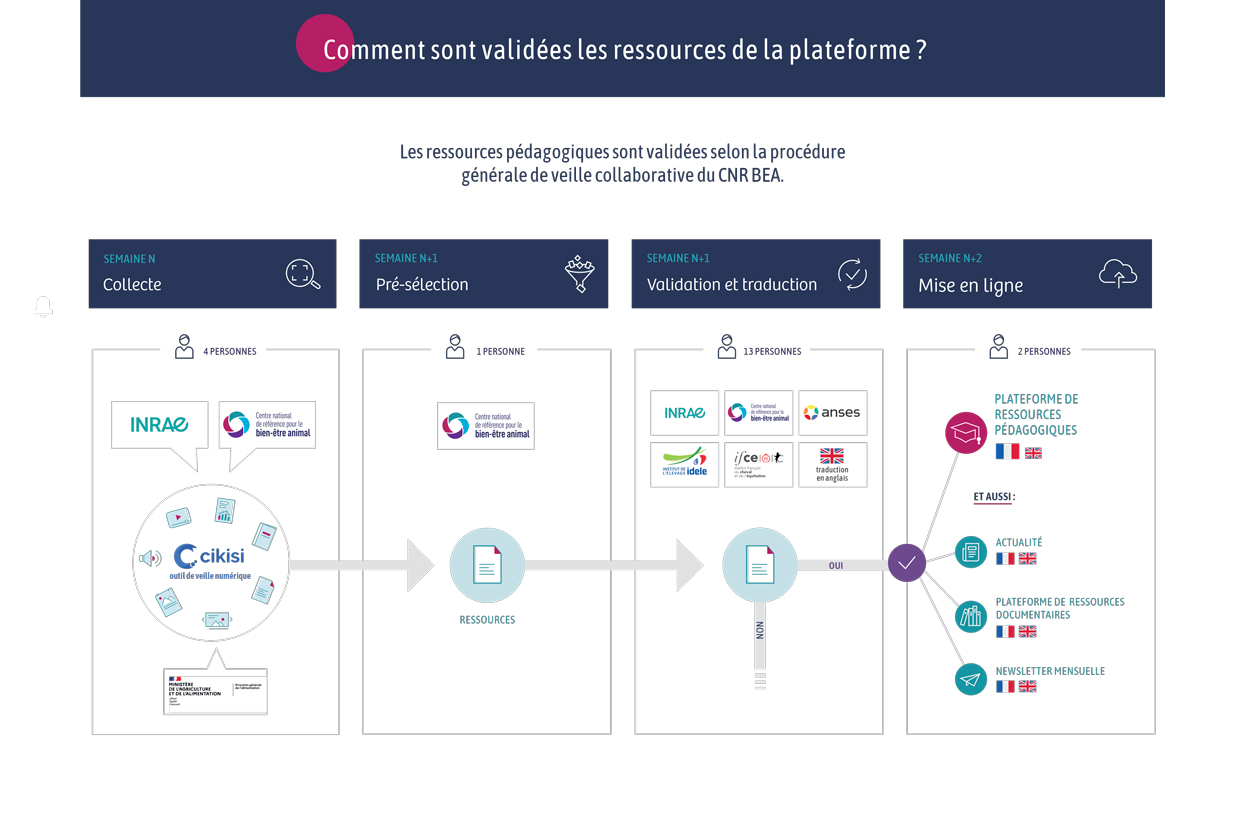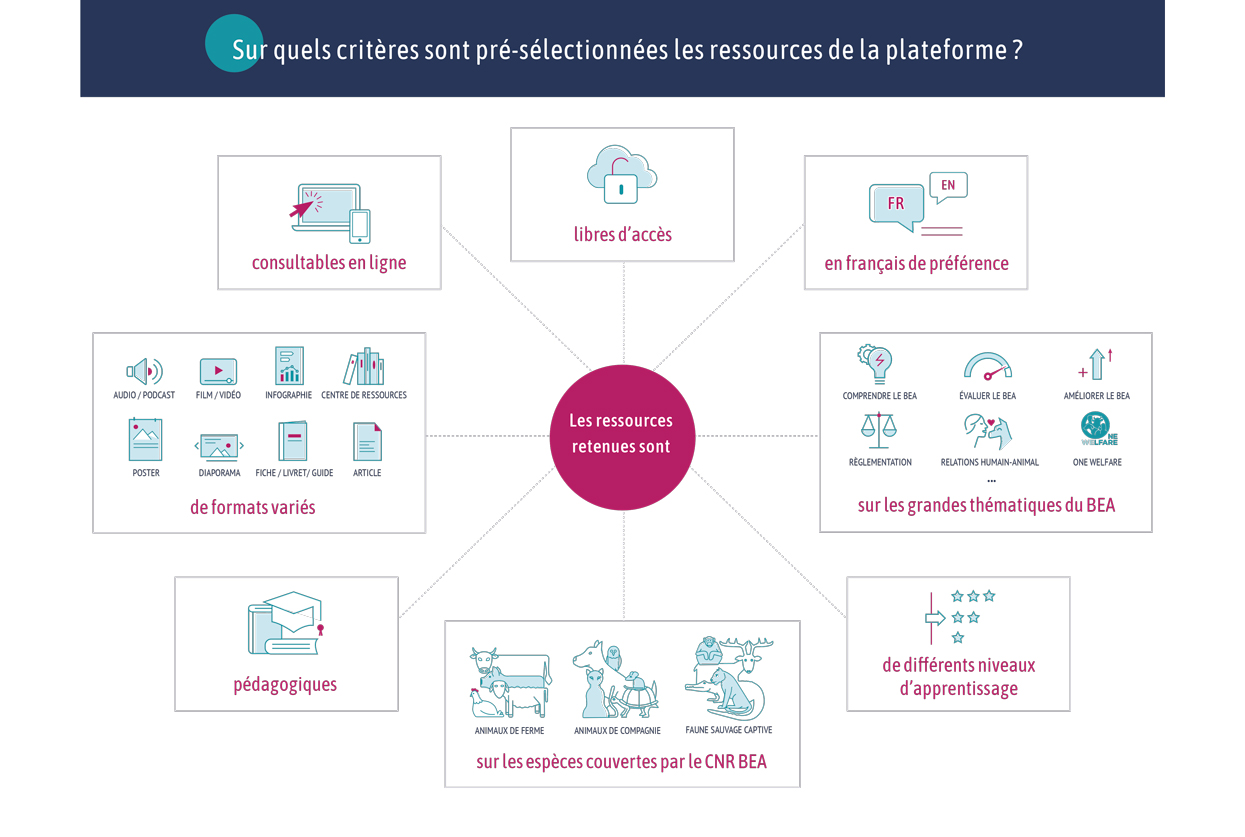Document type: article published in The Conversation
Author: Julie Chiron
Preview: A proposal for labelling that would inform consumers on farm animal welfare has been submitted to the French Ministry of Agriculture and Food Sovereignty, and has also been presented to the European Risk Assessment Agency (EFSA: European Food Safety Authority). [...]Animal welfare, an evolving concept [...].Taking animals' feelings into account
[...] In 2018, the Anses [...] proposed its definition of Animal Welfare, integrating individual consideration, positive aspects and an animal's cognitive and emotional capacity: "The welfare of an animal is the positive mental and physical state linked to the satisfaction of its physiological and behavioral needs, as well as its expectations. This state varies according to the animal's perception of the situation".
Vers un étiquetage mesurant le bien-être animal
[...] The decision to label animal products for consumption, as proposed by the European Commission (EC) in 2020 in its Farm to Fork strategy, would enable transparency and harmonization of animal welfare labels for products circulating in Europe. Currently, animal welfare labels have been developed in all EU countries, and the EC Study on animal welfare labelling lists 51 systems covering all the animal production sectors. In France, there is only one specific animal welfare label, created by the AEBEA (French Animal Welfare Labelling Association). However, no European legislation exists governing animal welfare claims or labelling. Given the proliferation of labels making such claims, the Anses considered it useful to formalize the scientific guidelines on which a labelling reference system and its welfare assessment protocols should be based. This work is based on the definition of animal welfare set out above. These guidelines are intended for scientists and stakeholders who are planning to establish a labelling reference system for a given animal category. The label produced on the basis of this standard is intended for the consumer, who must be able to consult the related labelling standard with complete transparency.
Taking selective breeding farms into account
Today's livestock farming systems are highly specialized and are organized into major production chains. The term "commodity chain" covers all the activities relating to a product, from its initial production through to its sale to the consumer. The food commodities of animal origin that should be labelled are derived from animals belonging, for the most part, to the production stage of the chain in question and, to a lesser extent, to the selection-reproduction stage. However, animals bred for genetic selection or reproduction are the products of genetic choices made for and by the industry, and they are raised and live on farms before being transported and then slaughtered to enter the food processing chain. [...]In line with the definition of animal welfare, each assessment protocol takes account of the fact that animal welfare is both individual (applying to a single animal) and has multiple domains. Six domains are specified: genetics, nutrition, environment, health, behavioral interactions and mental state. Each animal welfare domain has its own criteria, with associated measurable indicators that enable a value to be assigned. A total of fourteen assessment criteria have been defined. An overall animal welfare score is obtained by aggregating the indicator measurements carried out on an animal or its environment, where applicable, for each criterion. The indicators used are selected and described in the labelling reference document. Animal-based measures (ABM) are essential, and must be prioritised over resource-based measures (RBM). This approach is in line with the Anses definition of animal welfare: "indicators based on the environment can only be used to assess the actions taken to promote an animal's welfare, or for reasons of animal protection. Animal-based indicators directly assess the animal's state of welfare, corresponding to the evaluation of outcomes rather than means, that is to say, whether the animal's welfare is satisfactory under the conditions provided. With animal-based indicators, it is genuinely the animal's welfare that is assessed, rather than a human's perception of it". By the same token, if a label indicates only the farming method (the set of resources provided by humans to animals), this cannot be equated with animal welfare labelling. Although the farming method may correspond to a potential for animal welfare, it must be validated by welfare indicators measured on the animals. The aggregation of measurements starts with the measurements of a farm's individual animals, which go towards a final welfare score for all the animals. The final aggregation process combines the two separate welfare scores from different establishments, one for the breeding-reproduction stage and one for the production stage. [...]The final welfare score must have multiple grading levels. The Anses recommendation is to aim for four or five levels - depending on whether the system is mandatory or voluntary - to reflect the varied situations of livestock farms, to enable the system to be progressive, and also to provide consumers with reliable, easy-to-understand information that can be ranked in order of importance. [...]





